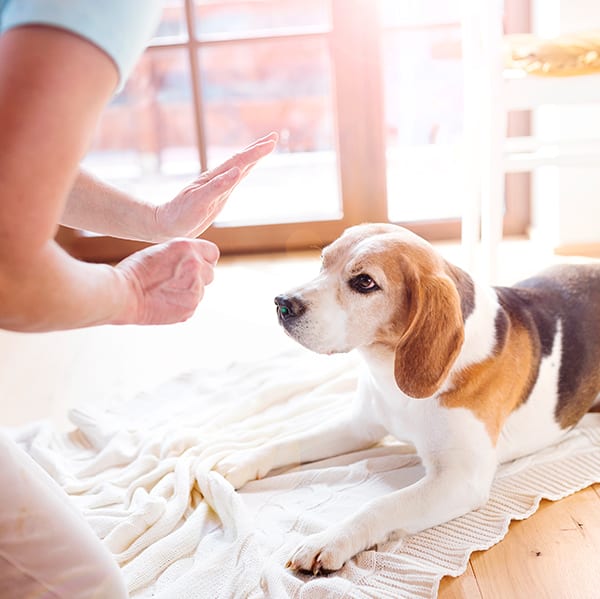Behavior problems in dogs and cats are actually some of the biggest reasons pets are relinquished to shelters or euthanized. Yet, not all veterinarians actively address or inquire about behavior changes in your pet. At Gray Animal Hospital, we’re determined to change that. Not only do all our vets care about behavioral changes in your pet, but we’ve also got one who had a special interest and advanced training in animal behavior! Dr. Linda Lewiston graduated from the Karen Pryor Training Academy and is a certified training partner. With her own dogs, she does agility, obedience, and therapy work. with her experience, she’ll be able to help you work on a wide variety of behavioral issues so you and your pet can get back to building your bond.
More bout Dr. Linda Lewiston
Dr. Lewiston has always had a special interest in behavior and she has taken many veterinary continuing education courses on behavior. Many of these courses were taught by veterinary behaviorists that have
completed residency training in behavior.
In addition to these courses, Dr. Lewiston is a graduate of the Karen Pryor Training Academy which uses clicker training and positive reinforcement for animal training. Dr. Lewiston completed an intense 6-month program to learn the skills needed to correct problem behaviors. Part of the course included online reading, quizzes, and homework assignments. There were also workshops where each student met with an instructor for individual instruction, as well as practice training different skills. Dr. Lewiston passed in-class assessments as well as a written exam and a practical assessment.
Dr. Lewiston has also worked with many rescues. Most rescue dogs have some type of behavioral issue and it can be challenging to identify the underlying cause and to find a treatment plan to correct the behavior. Dr. Lewiston enjoys this challenge and looks forward to helping pets prepare for adoption so they can lead happier lives.
Furthermore, Dr. Lewiston has earned obedience titles and canine good citizen titles with her own dogs. She also participates in canine agility. Soon, she will be starting barn hunts and nose works.

How to Treat Cat and Dog Behavior Problems
Treating behavior problems in dogs and cats requires a multi-modal approach. We approach each case in a similar way, and then will customize the treatment once we determine the cause. Steps we generally follow when treating a behavior problem include:
1. Rule out physical or medical issues. Sometimes your pet’s behavior problem is actually caused by a medical issue. Maybe your dog has arthritis, and so begins to ignore the “sit” command to avoid pain. Or perhaps your cat is toileting outside the litter box because they have a urinary tract infection. To ensure we’re not dealing with a medical issue, we’ll run comprehensive tests and perform exams before moving on to the next step.
2. Identify the root cause of the problem. If a medical issue isn’t to blame, then we’ll need to identify the root cause of your pet’s behavior problem. Problems can develop for a number of reasons. Changes to your home environment, such as moving, adding a new pet, or having a baby; poor socialization in their early years; and negative past experiences can all trigger behavioral issues.
3. Develop a treatment plan. Once we identify the root cause of your pet’s issue, we’ll work on developing a treatment plan to curb the behavior. This may include counter-conditioning, desensitization, shaping, response substitution, or medication. You may be able to work with your pet on your own to slowly condition them to no longer exhibit their undesirable behavior, however, sometimes it may be necessary to elicit the help of a professional trainer. Will work with you to recommend a trusted trainer in these instances.
If your pet has a behavior problem you’d like to correct, please contact us today at (224) 304-0668 or fill out our online form for a consultation appointment with our cat and dog behaviorist!




